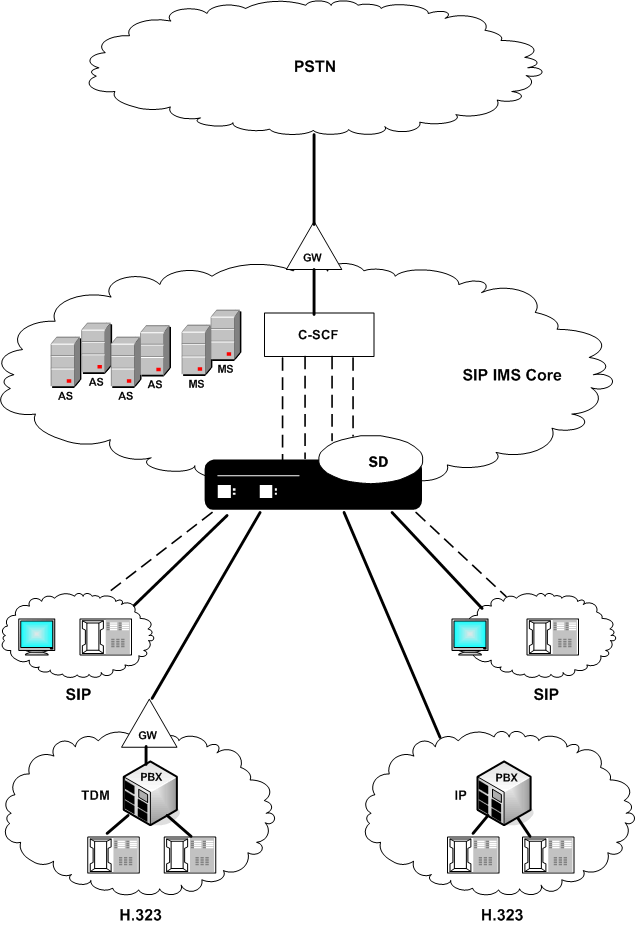Integrating with IMS
With surrogate registration, the Oracle Communications Session Border Controller (SBC) lets IP-PBXes integrate with the IP Multimedia Subsystem (IMS) architecture. The IP-PBX registers itself as if it were user equipment (UE), which triggers the implicit registration of all phone numbers associated with the IP-PBX.
Implicit registration means the explicit registration of one address of record (AoR) triggers the implicit registration of all the other AoRs associated with that UE. The implicitly registered AoRs are passed back to the UE as P-Associated-URIs in the registration’s 200 (OK).
IMS assumes that each SIP endpoint can register itself with its Serving-CSCF (S-CSCF). However, phones can be connected to SIP Integrated Access Devices (IADs) or SIP or H.323 IP-PBXes. The SBC performs SIP registration on behalf of the IP-PBX and IADs.

The SBC registers on behalf of the IP-PBXes and then stores the associated URIs returned by the Serving Call Session Control Function (S-CSCF). The calls from the phones behind the IP-PBX can be routed based on the cache entry the SBC creates after it receives each phone’s associated URI. Calls are routed using the service route, local policy or any other routing mechanism based on the associated session agent or session agent group. The SBC also supports multiple registrations on behalf of a IP-PBX because the IP-PBX can support thousands of phones, but the registrar might only be able to send 10 to 20 associated URIs in response to a single registration.
The SBC replaces the Contact URI for requests from the IP-PBX to the core to match the registered value. For calls from the IMS core to the IP-PBX, the SBC replaces the Request-URI username with P-Called-Party-ID/To-URI username. The IMS cores sends INVITES for the phones behind the IP-PBX with the registered Contact URI as the Request-URI instead of the AoR of the phones. The IP-PBX needs to see the phone’s AoR in the Request-URI.